by Olof Janson
In memory of Sven Mogel our friend and the great ammunition collector. His samples live on now in Smålands Militärhistoriska Museum in Delaryd. Some of these samples here are related to him.
Pictures from Swedish Army Museum if nothing else specified.
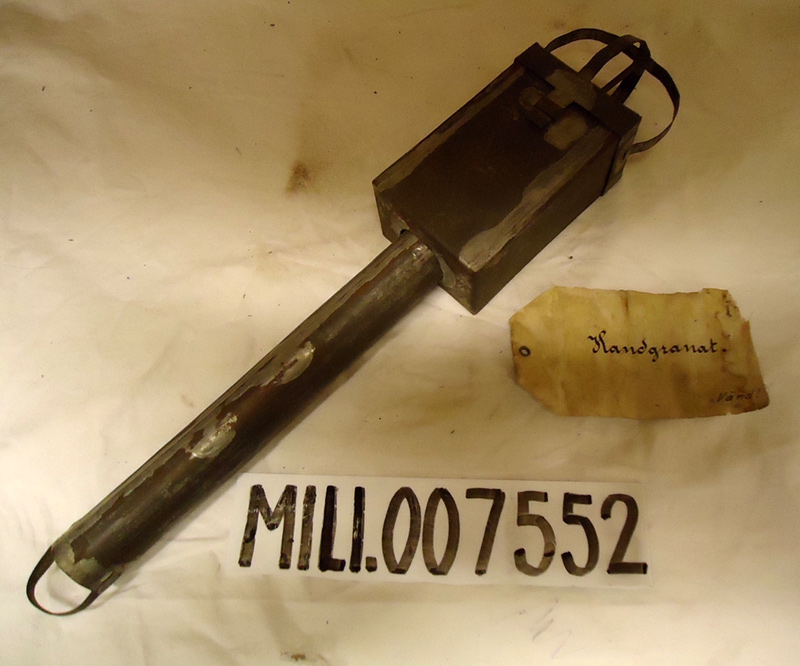
Handgrenade from 19th century
· Handgrenade m/1918
During WW1 Sweden adopted the German M1917 stick grenade. It was designated m/1918 and it was used in Sweden even up to WW2.
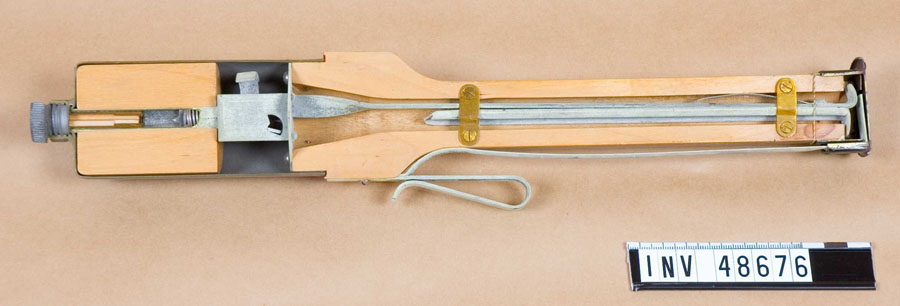
Swedish stick grenade
Spränghandgranat m/1918


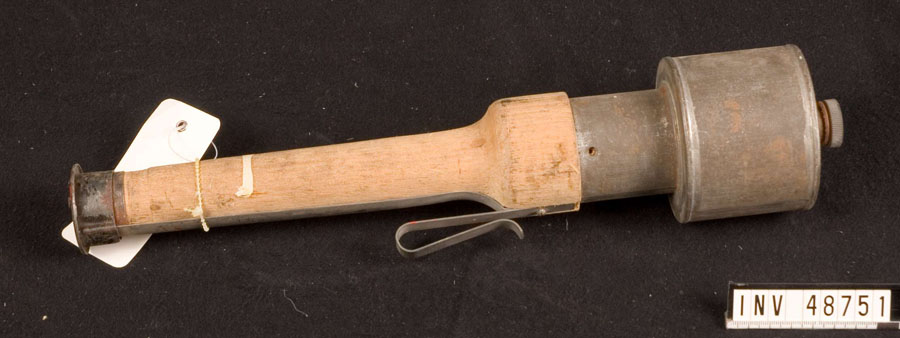
Smokegrenade m/1918
1937
When WW2 came closer there came e demand for more modern grenades. The first grenade came either as smoke grenade or as fire grenade.
Handgranat m/1937
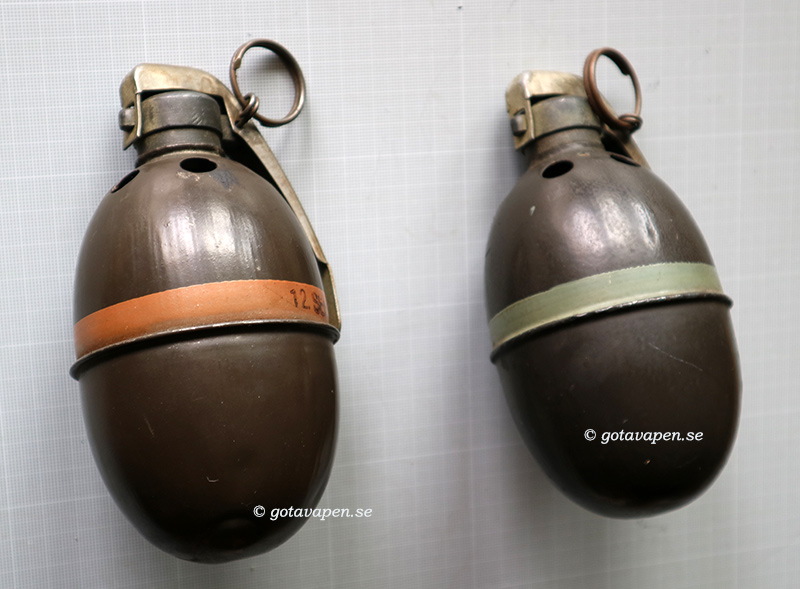
Incendiary grenade m/1937 to the left (brown band)
Smoke grenade m/1937 to the right (grey band)
(picture ima-usa.com)

Handgrenade fm/1933
This grenade exploded on impact with ground. 1930-1933 trials were made with different constructions. The military wanted to avoid the risk of having the grenade thrown back. For this reason greanades which exploded on impact were tested.
Major G Mörners constructed a cylindric handgrenade., which exploded when it hit something.
The ignition was due to gravity. The two cylindrical parts came together and this caused the grenade to explode. This hand grenade was developed in Bofors by Major Morner. The designation was fm/33 (fm = test-sample).
1933 the government thought that there was no need for an army and the tests were closed. However 1939 the idea was brought back and it led to Handgrenade m/40.
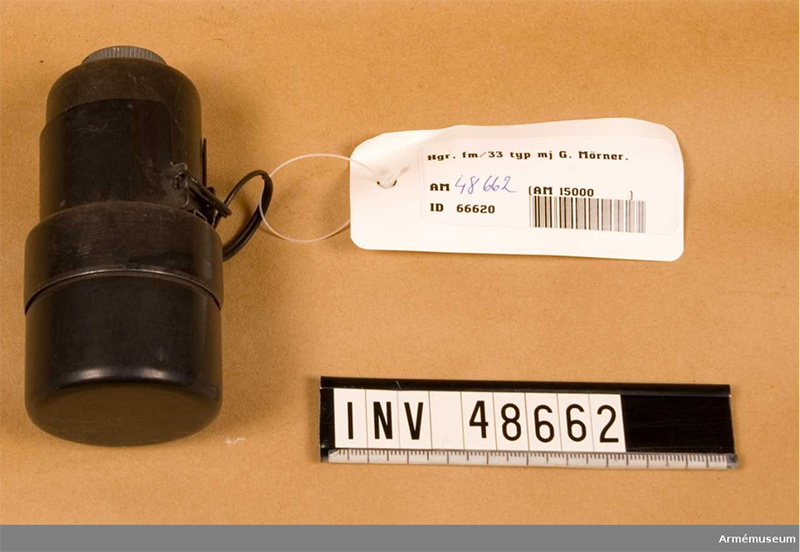
fm/1933 by maj. G. Mörner
Explosive Handgrenade m/1940
Hgr m/40 or SHgr m/40
When the war stood before the door in 1939, the Swedish army lacked modern hand grenades. The test grenade m/33 was improved and developed. Hand grenade m / 40 consisted of two cylindrical parts which were joined but could move towards each other. This hand grenade was a blow-breaking hand grenade, i.e. it exploded after the throw, when it hit anything. In the hand grenade, there was a spring under tenshion with a striking pin for ignition. When the grenade collapsed, the two parts were pushed together and the firing pin snapped off and the grenade burst immediately. There was a safety wing that after the throw would be released. It could fall loose by mistake in the case of incorrect handling. When the soldier should throw the hand grenade, he had to hold his hand tight over the wings! If the soldier changed his hand, the wings dropped! The hand grenade could then burst at the slightest movement!
In addition, it was required that there were no branches or other objects in front when the hand grenade was thrown. The grenade then explodes too close to the thrower. This hand grenade was withdrawn and it resulted in that the Swedish army lacked explosive hand grenades at the beginning of the war!
Weight 300 gram
High 100 mm

Explosive handgrenade m/40
(foto Armémuseum)

Incendiary grenade m/40
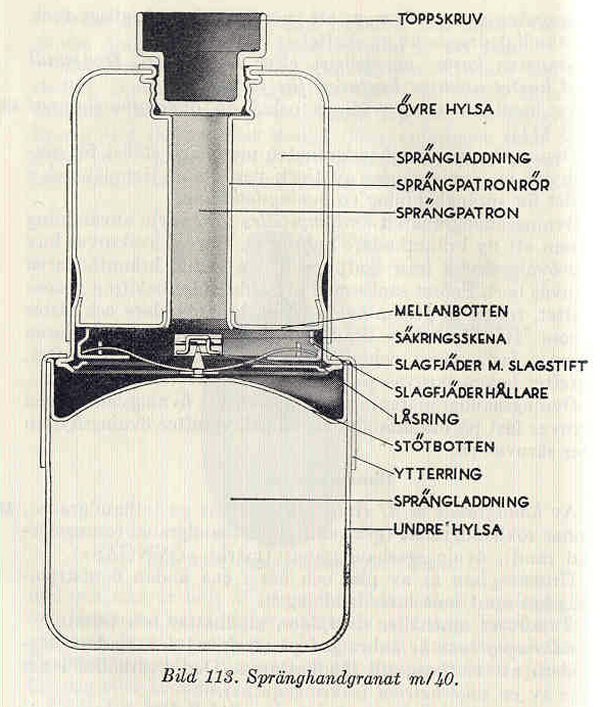

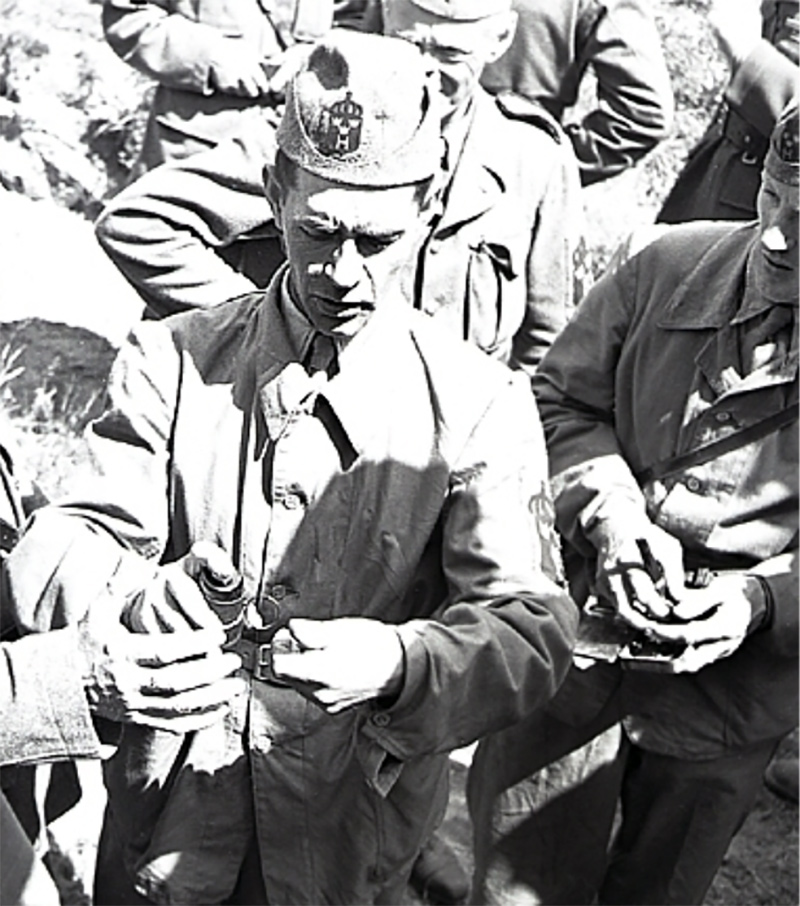
Demonstration for the Homeguard with Shgr m/40
1939
Handgrenade m/39
Sweden bought the German M1924 handgrenade. 1939 there was severe lack of all types of arms. The defense forces managed to buy 350.000 stick grenades m/1924 from Germany. In Sweden they were designated Explosive hand grenade m/39 (Shgr m/39)

Shgr m/39

inactiveatedd German stickgrenade
m/24
(picture ima-usa.com)
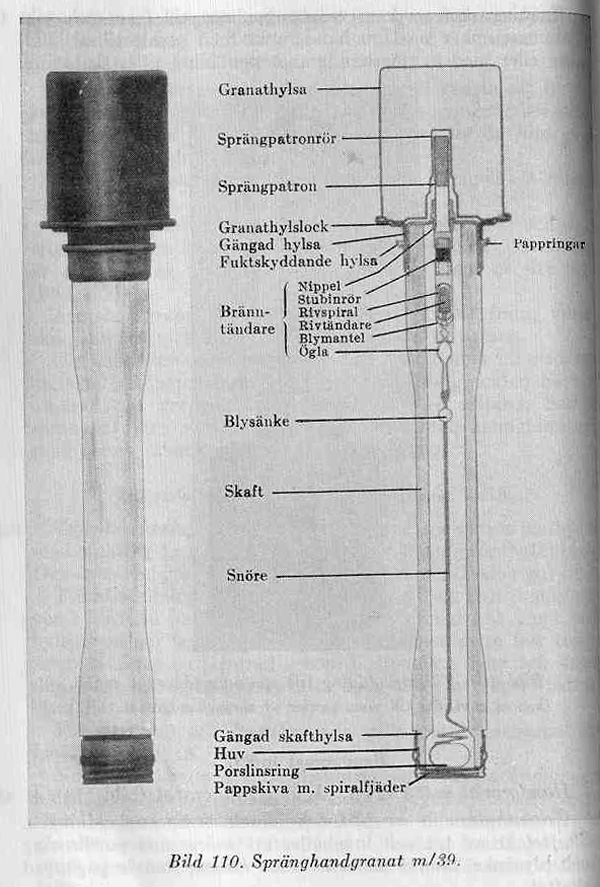
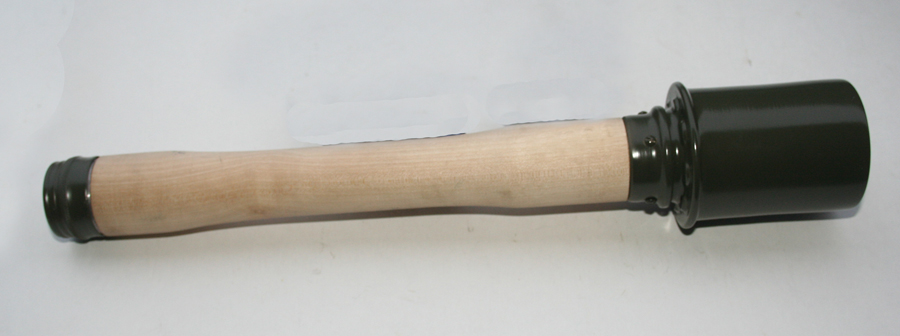
Shgr m/39 (Inert)
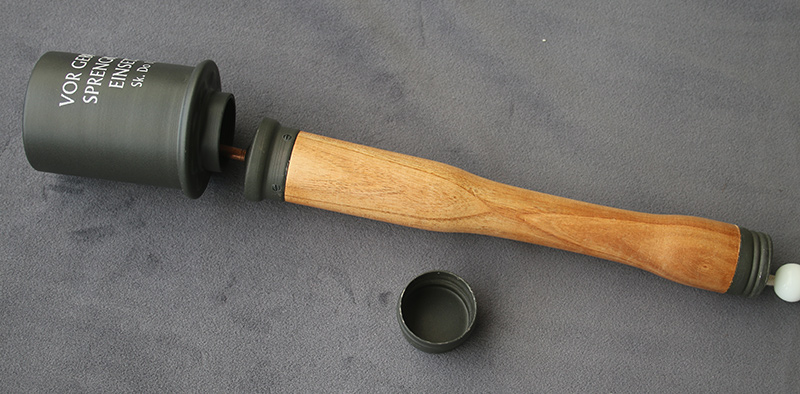
Shgr m/39 (inert for training)
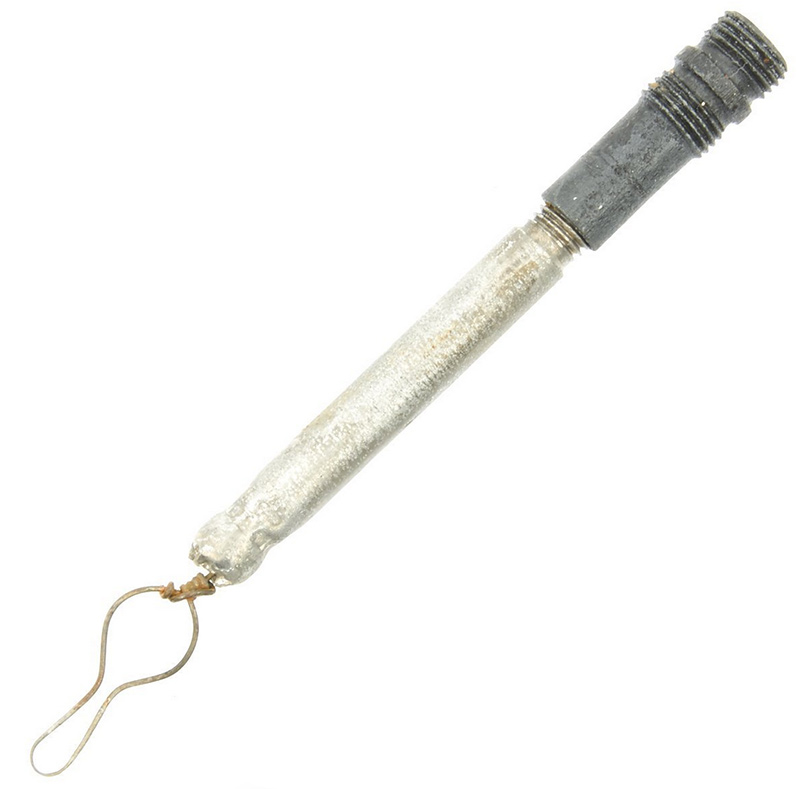
ignition fuze m/39
(picture ima-usa.com)
Hand grenade m/1939 (German m/1924) had an ignition fuze BZ24 that should burn for 4.5 seconds. To use the hand grenade, the lid in the bottom would be unscrewed. Then the porcelain ring was detached which, with a string, was attached to the lower part of the burner. The soldier would pull out this string and the fuze burner started. These 4.5 seconds before the explosion were initially considered a good safety time. It soon turned out to be too long time since there was a risk for the enemy to pick it up and threw it back. To avoid this, the soldiers should repeat "Today's News" when the burner began to burn before the hand grenade was thrown. There were reports about stick grenades which exploded immediately! There were rumors that these incorrect burners were made by the Germans prisoners in order to sabotage. These rumors and claims were never investigated
Again, the Swedish defense forces had no safe hand grenade! The Royal Swedish Military Authority (KKV) then announced a competition to produce a safe ignition fuze. The competition was between Bofors Nobelverken, Svenska Tandsticksbolaget and the Swedish Defense Forces (1943 converted to the Swedish Defense Forces Works - FFV). The ammunition factory Marieberg got the order, which was part of FFV. The German burner was copied, but they also had problems getting a smooth and safe function. It was at this stage that engineer Rolf Oström took part and later led the development work. In 1943, a burner had been produced which was shown to the Armetyg administration and the CCA, but with a lack of results. After various changes at FFV, their burners were approved. On July 1, 1944, Rolf Oström was commissioned to start manufacturing this burner at the Zakrisdal ammunition factory in Karlstad. This new safe and working burner with Shgr m/39 was called Shgr m / 39C
Stick hand grenade for training m/39C

Function se below

References for Hgr m/40 och Shgr m/39
-
Carl-Olof Björsell
-
Rolf Öström
Brittish handgrenade m/36 (Mills Bomb)
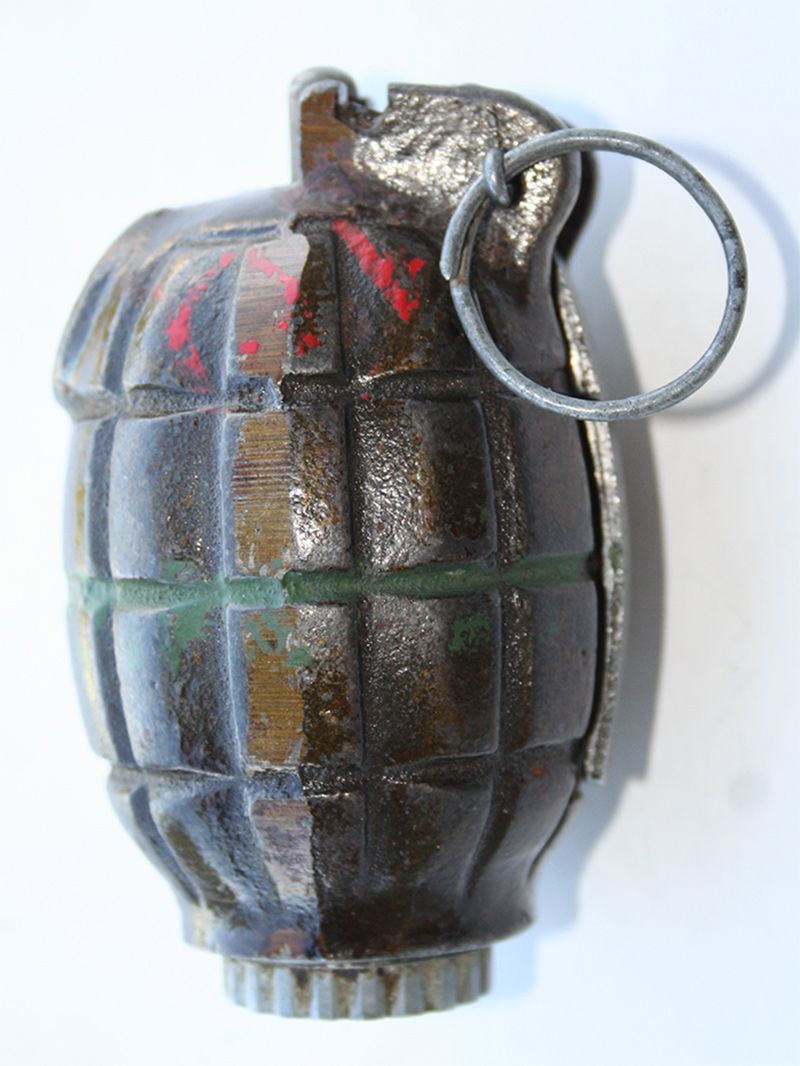
No.36M Handgreande. It was used by Swedish volounteer Company in the Winter war 1939-40. It is called "Mills Bomb", after Sir William Mills (1856-1932).
Stick grenade m/43
This stick grenade is a Swedish variation of the German m/24. It's made of steel and a completely Swedish construction.

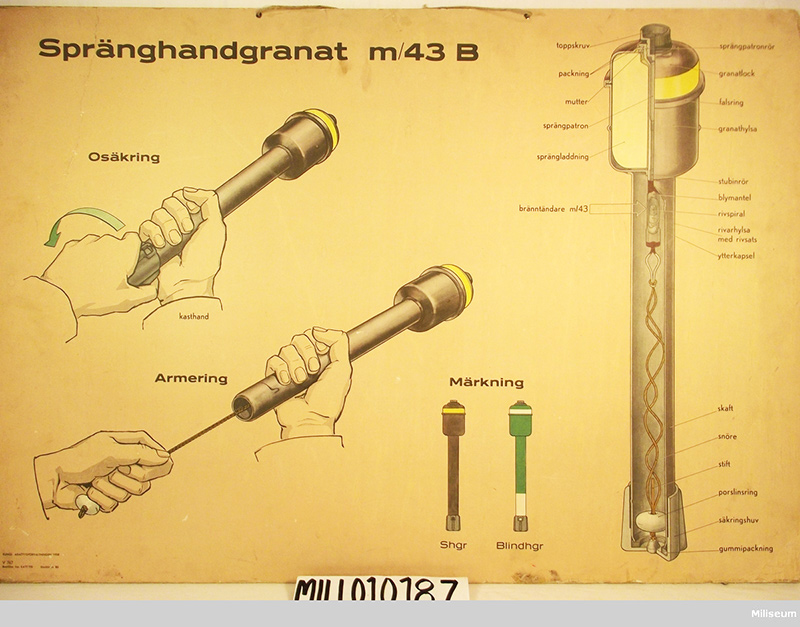
Explosive egg grenade m/1945

Shgr m/45
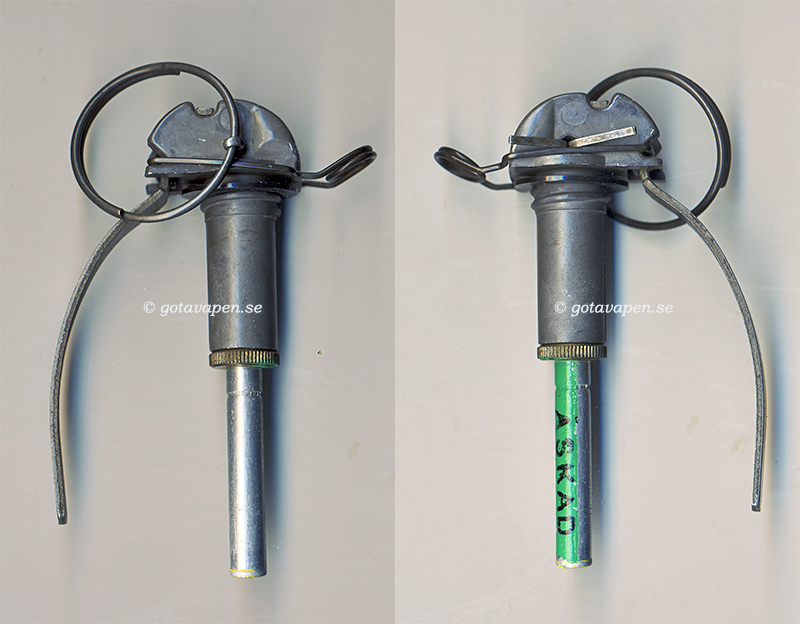
Primer mechanism m/45

| This type of handgrenades has 3 safties: | |
| 1 | Ring to be pulled out |
| 2 | Steel wire to be flipped up |
| 3 | Grip, which will fall away, when thrown but only if the previous 2 safties has been removed! |
Training egg grenade Ohgr 6 similar to m/45

Smooke grenade m/51
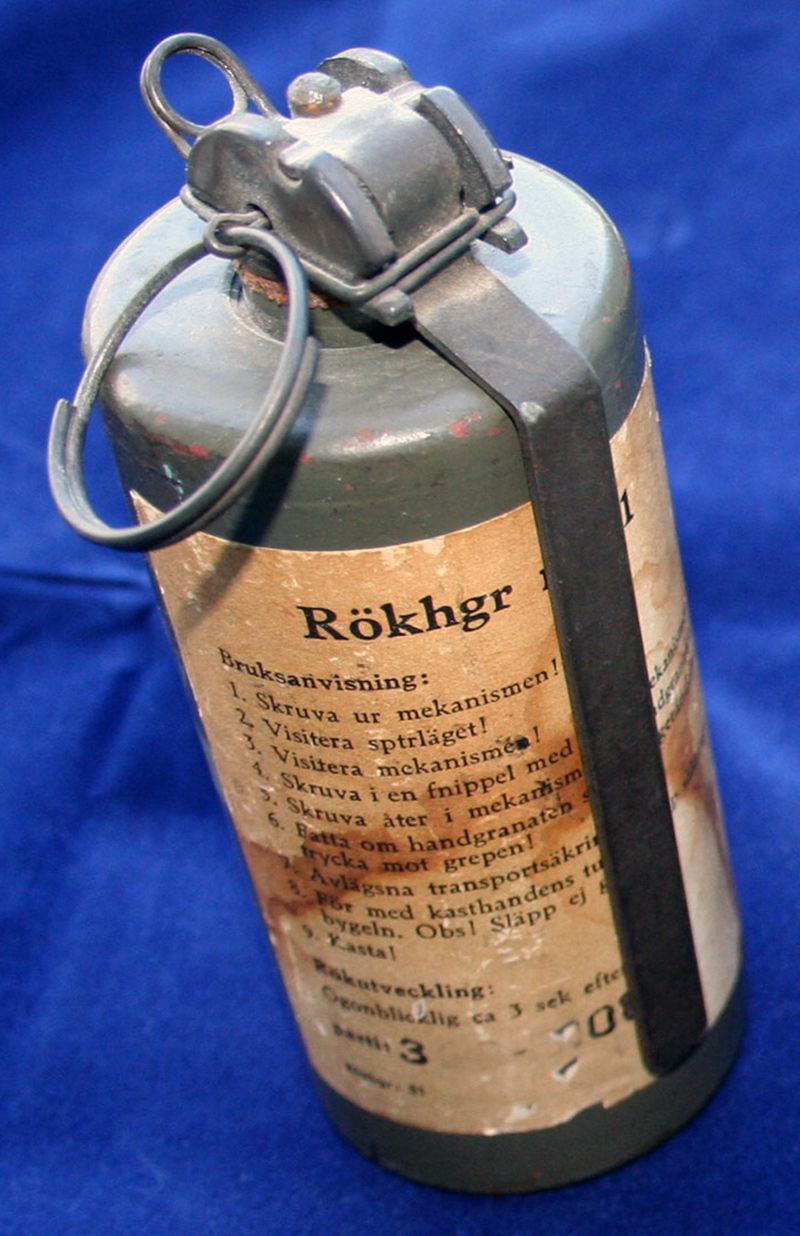
Rokhgr m/51
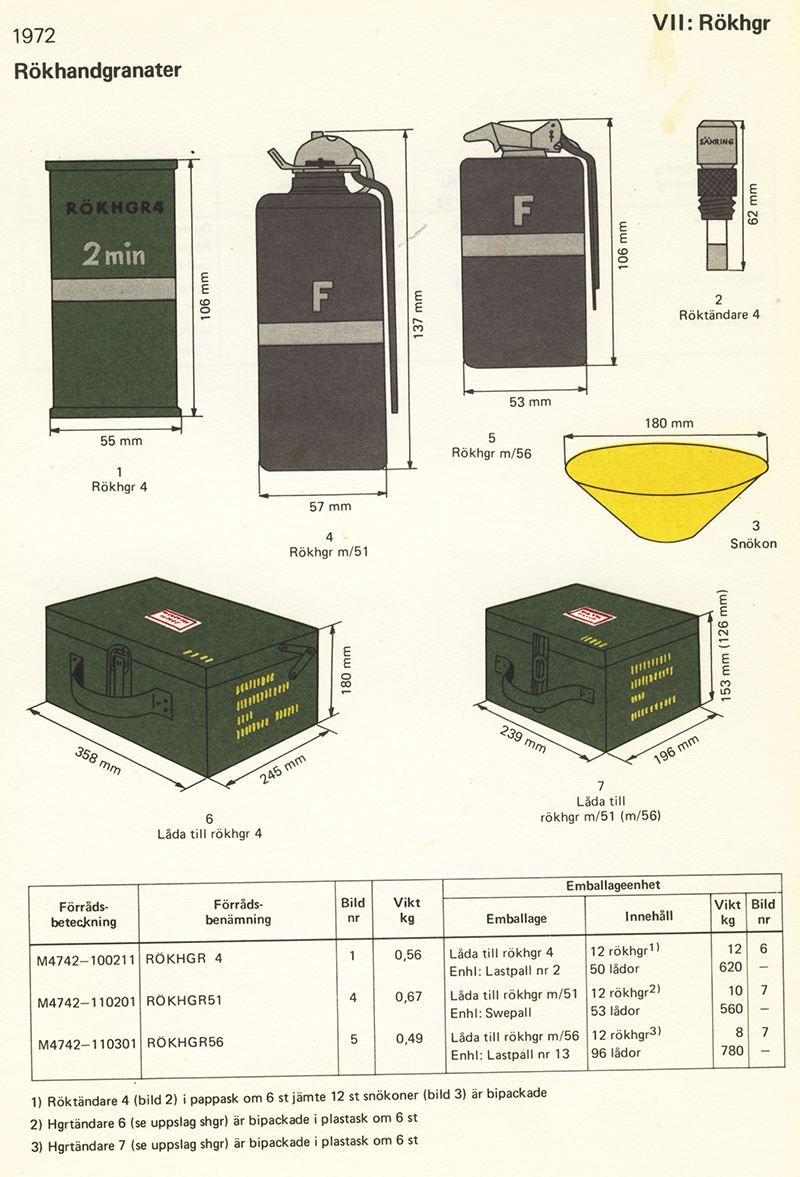
Explosive egg grenade m/56

SHGR56
SHGR56 has 3 safeties:
-
Ring to be pulled
-
Thumbgripp to be lifted
-
The grip which will fall off when grenade is thrown away.

Shgr m/56
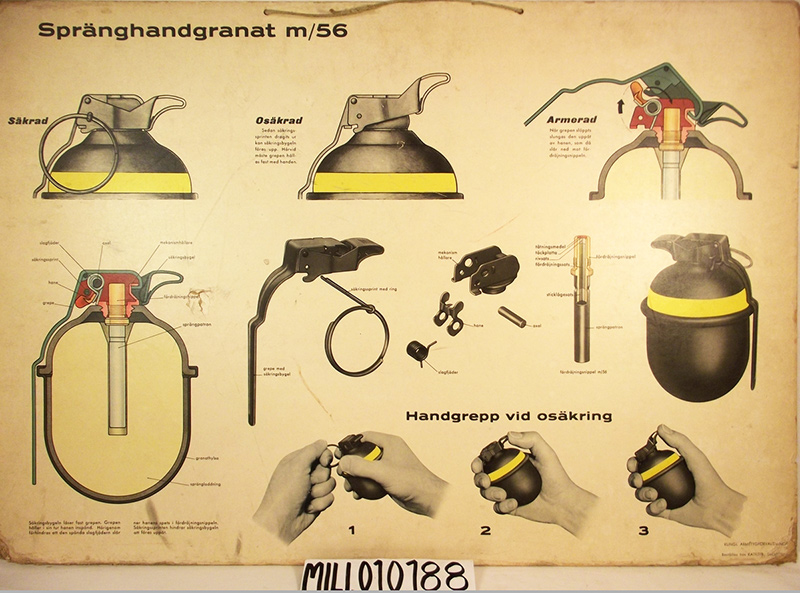
Explosive egg grenades 90 och 2000
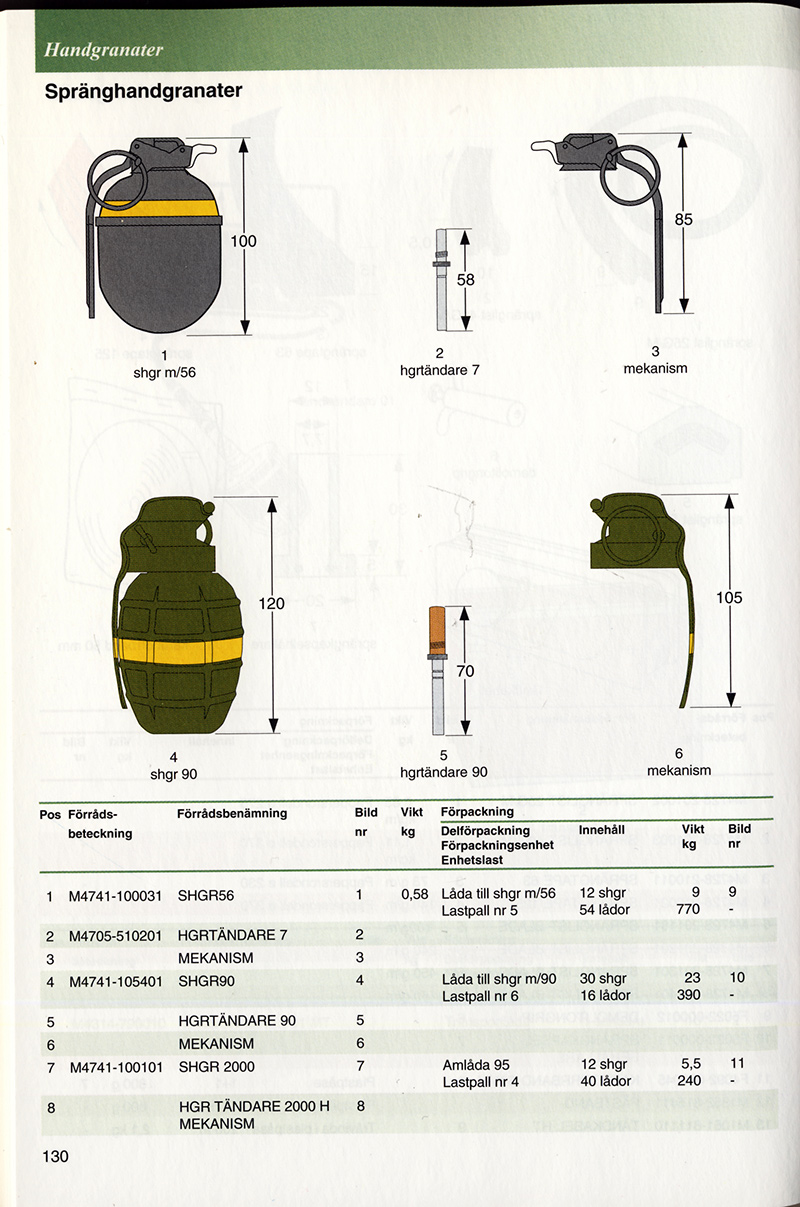
2015 SHGR56 was improved. The new improved is called SHGR56B
It got only 2 securities instead of the older 56.
1) The older had a ring to be pulled
2) A security steel latch to be flipped up
3) The grip which fell of when the grenade was thrown.
The new improved SHGR56B has no steel latch which must lifted. It is only to twist the ring and pull it and the grip, which is much wider will fall away, when the grenade is thrown.
This system is considered by some simpler than the orignal SPHGR56 security system.
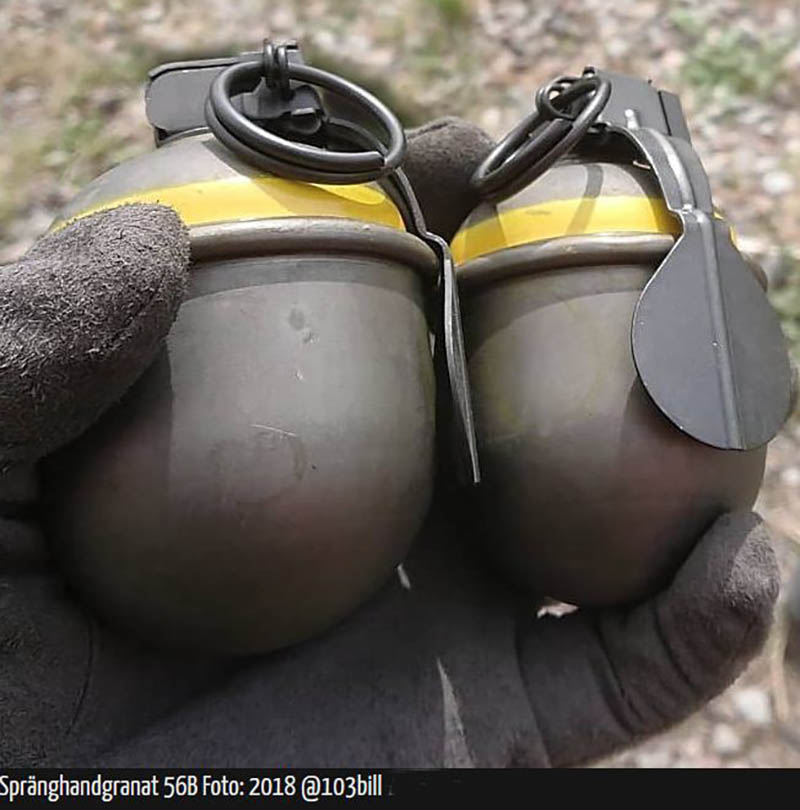
(picture soldf)
Shgr 90 becoming surplus in favour to Shgr 2000 because of its shorter safety zone.
Explosive egg grenade 2000

SPHGR90
(picure soldf)

SHGR2000 has only 2 safties, the ring and the grip